Mesozoic Plants
The following sections illustrate the major groups of plants present during the Mesozoic Era and thus available as food to herbivorous dinosaurs. Where available, both modern relatives and fossils are shown (fossils may be from time periods other than the Mesozoic).
|
Lycopods
Lycopods are commonly known as club mosses. They reproduce via spores released from stalked cone-like structures. Modern forms are small plants of forest undergrowth, but during the Paleozoic Era some forms reached tree size. They likely would have made up part of the browse for dinosaurs that fed low to the ground.
Ground Cedar, a modern lycopod:
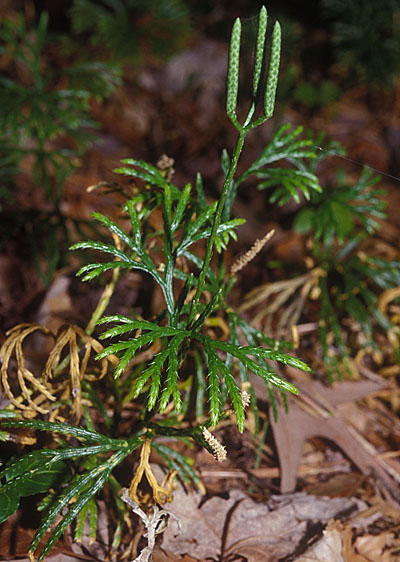
| The leaves of a Carboniferous club moss, Lepidophylloides:
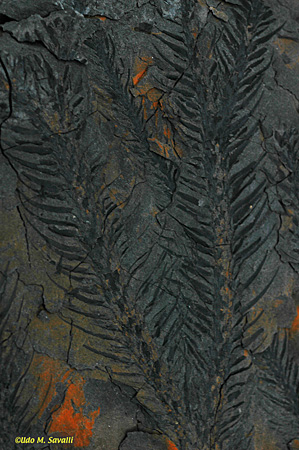
| A scale of the cone-like spore-producing structure of Lepidostrobos:
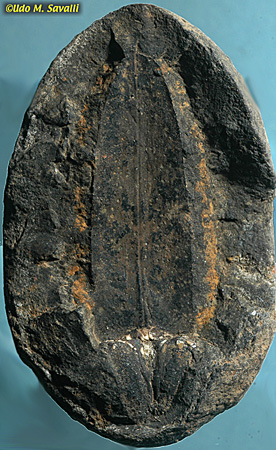
|
Horsetails
Modern horsetails and scouring rushes form reed-like stalks growing less than 1 m tall. They are found primarily in wet places. Mesozoic forms were similar to modern forms and probably formed part of the browse for low-feeding dinosaurs. However, earlier, during the Paleozoic, they were tree-like and dominant components of the "coal forests".
A modern horsetail:

| A modern scouring rush:

| A section of a trunk from Calamites, a Carboniferous tree-sized horsetail:
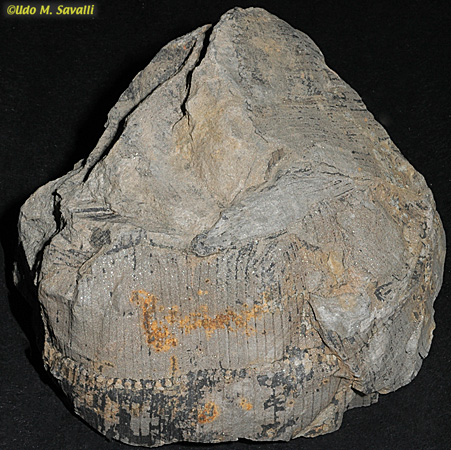
|
Ferns
Ferns are the most successful of the modern spore-producing plants, and were widespread during the Mesozoic Era as well, especially during the Cretaceous. They were probably the most common understory plant. A few species are tree-sized.
Modern tree ferns:
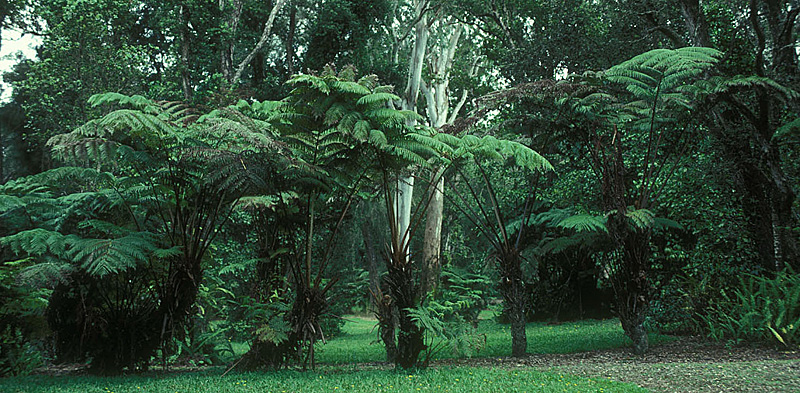
| Model of a tree fern:

|
Modern lady ferns:
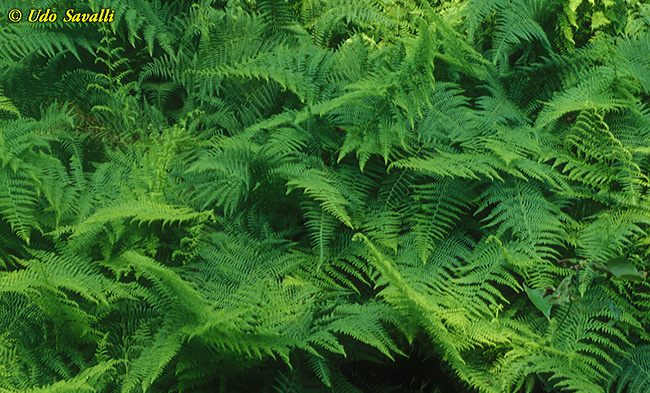
| Fossil of a Pecopteris frond:
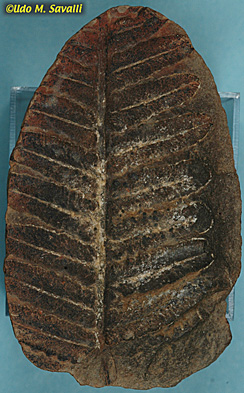
|
Seed Ferns
Seed ferns are an extinct group of plants that had fern-like leaves but produced seeds and were actually more closely related to cycads. They represent a transitional form between the spore-producing plants (ferns, horsetails, lycopods) and the cone-bearing seed plants (cycads, conifers, ginkgoes). They were especially common during the late Paleozoic Era, but declined throughout the Mesozoic and went extinct at the end of the Mesozoic.
The frond of a Carboniferous seed fern, Neuropteris:
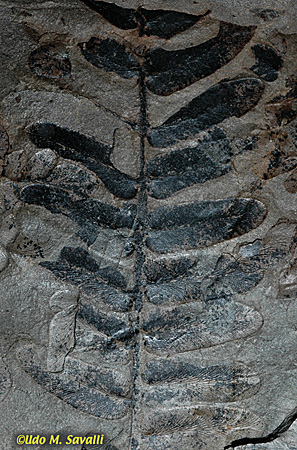
| A leaflet of the seed fern, Alethopteris:
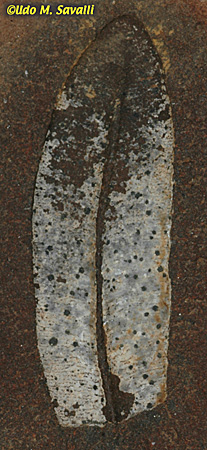
| Leaves from the seed fern, Glossopteris:
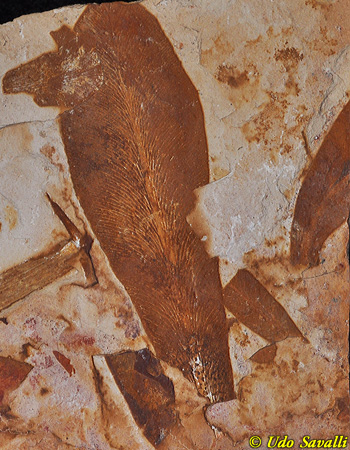
|
Cycads
Cycads (as is true for the seed ferns, ginkgoes and conifers) reproduce by producing seeds in cones instead of minute spores. This gives the young plants a greater chance of success in drier environments. Cycads have stout trunks and superficially palm-like leaves. Only a few species persist today, but during the Jurassic Period they were very common and diverse.
A modern cycad:
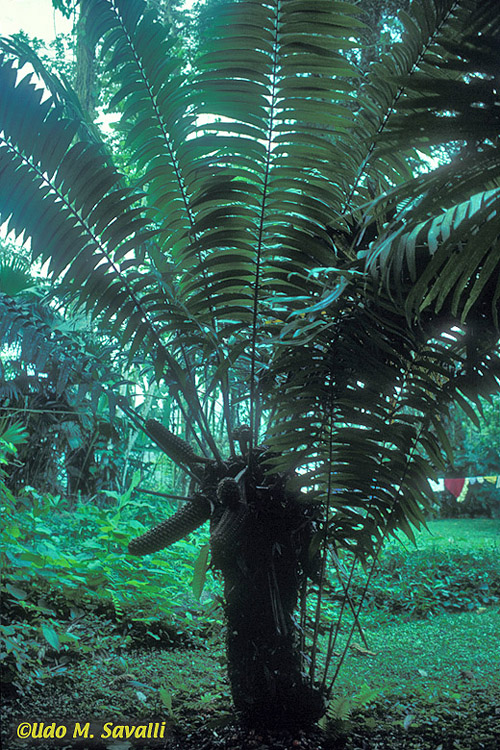
| The modern cycad, Chestnut Dioon:
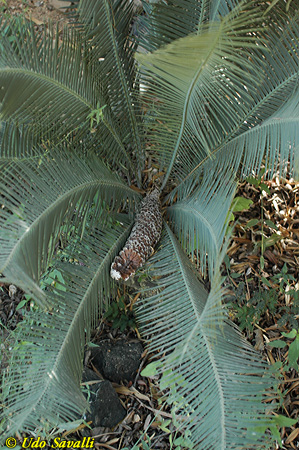
| A model of a Mesozoic cycad tree:
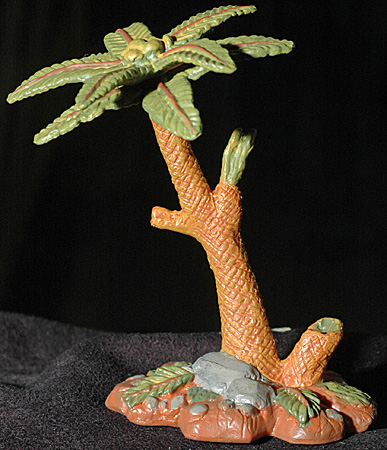
|
Bennettitales
Bennettitales is an extinct group of seed plants that were superficially similar to cycads, but were probably more closely related to the flowering plants. They first appeared in the Triassic Period and went extinct at the end of the Cretaceous, so were present throughout most of the Mesozoic Period. We do not have any fossils available in lab.
A model of the Mesozoic Williamsonia:
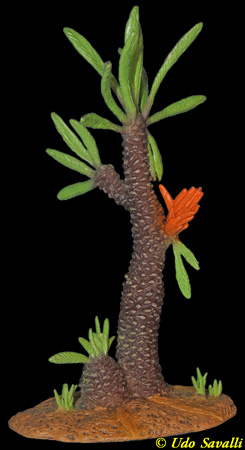
| A model of two Bennettitalian species: Monanthesia (taller, in background) & Cycadeoidea (foreground, with rounded trunks):
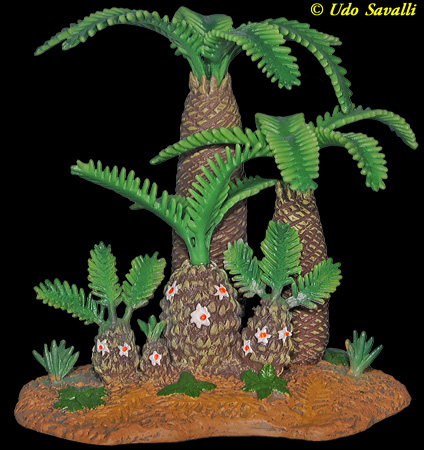
|
Ginkgos
Ginkgoes are tree-sized plants that were quite diverse during the Mesozoic Era, but only one species survives today.
Ginkgo (leaves and seeds):
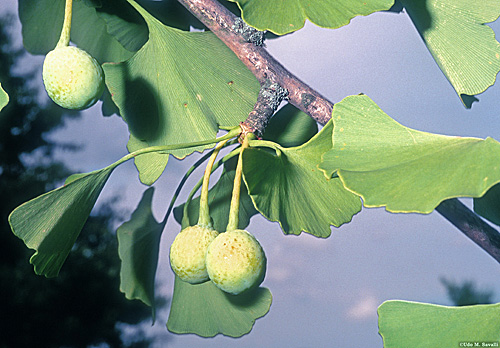
| Fossil Ginkgo Leaf (replica):
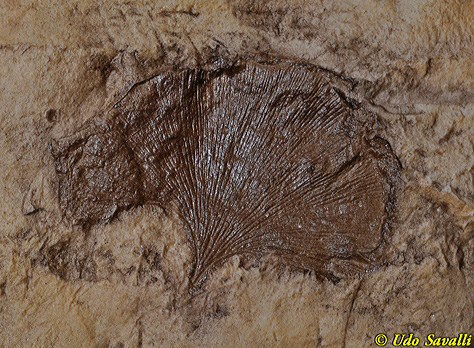
|
Conifers
Modern conifers include the familiar pine, juniper, and firs trees that produce seeds in cones. Conifers were common, diverse, and the dominant plants during the Triassic and Jurassic Periods, but declined in the Cretaceous following the diversification of the flowering plants.
A modern conifer forest dominated by Redwoods:

| The strange monkey puzzle tree is a surviving relic of a group that was dominant during the Jurassic Period
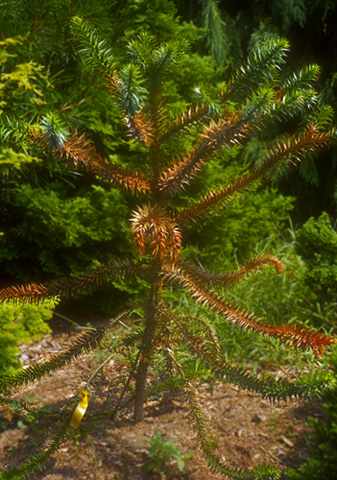
|
50 my old leaves of the Dawn Redwood, Metasequoia occidentalis:
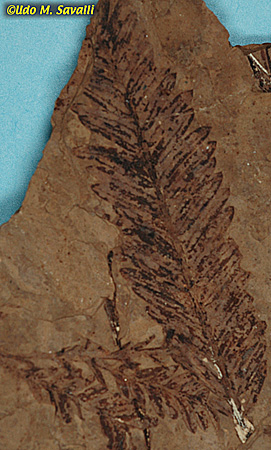 | Cones (one intact and one cut) of the conifer Araucaria (a relative of the monkey puzzle tree):
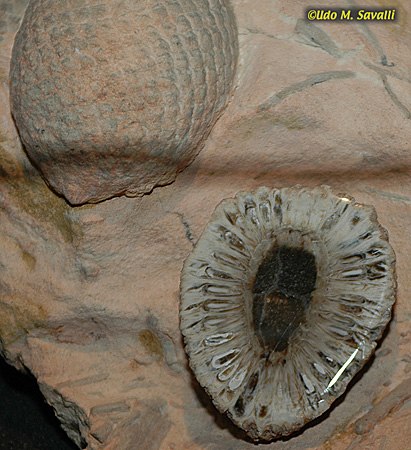 | A model of the Jurassic conifer Agathis
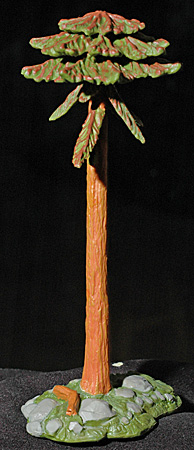
|
Flowering Plants
The flowering plants (or Angiosperms) are by far the most diverse group of plants on earth today, and account for about 90% of all species. Flowering plants reproduce using flowers instead of cones (which are used to attract pollinators instead of relying on wind) and encase their seeds in a fruit. Flowering plants evolved relatively recently, appearing in the early Cretaceous Period. By the late Cretaceous they had become the dominant plant group and the world would have looked much like it does now.
A variety of wildflowers in a meadow:
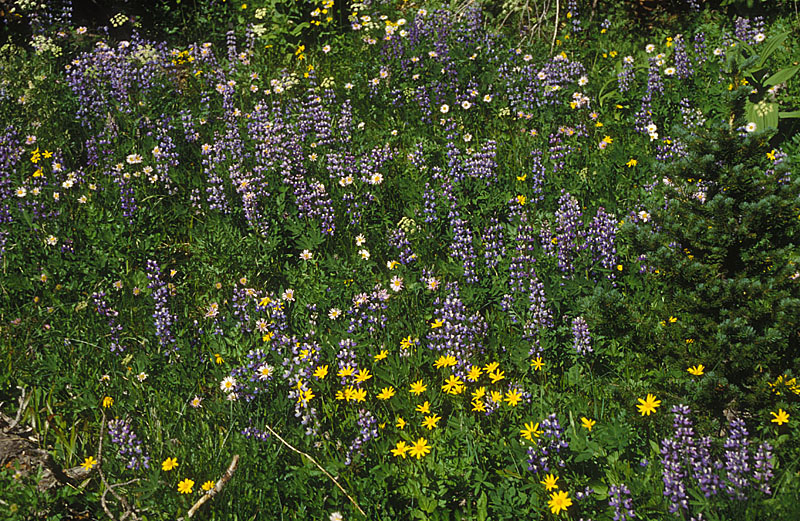
|
An unidentified flower from the Eocene, 50 mya:

| An unidentified fruit from the Eocene, 50 mya:
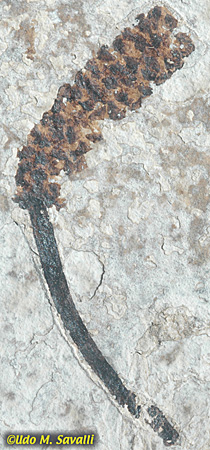
| A fossil Hackberry leaf from the Eocene, 50 mya:
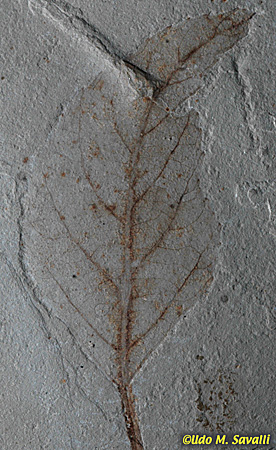
|
|




























